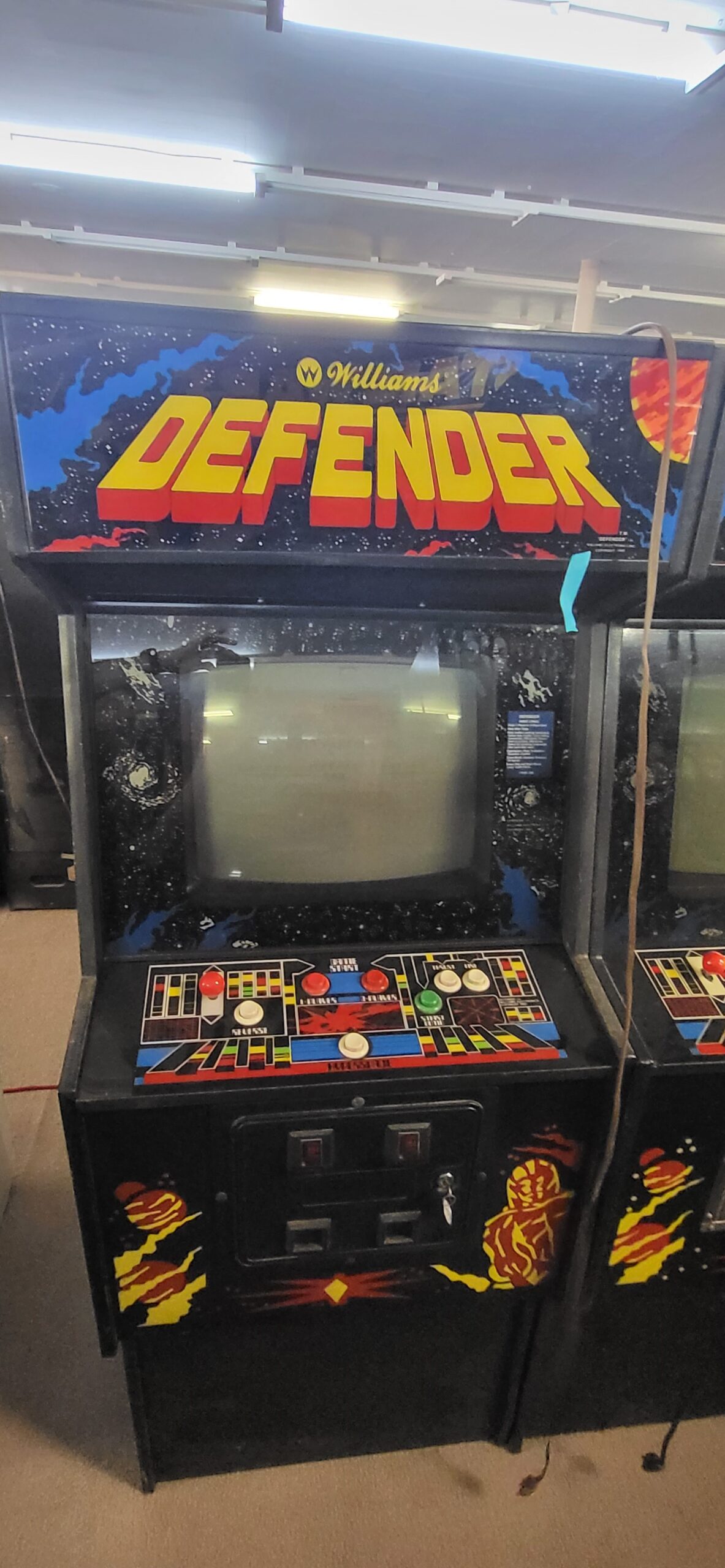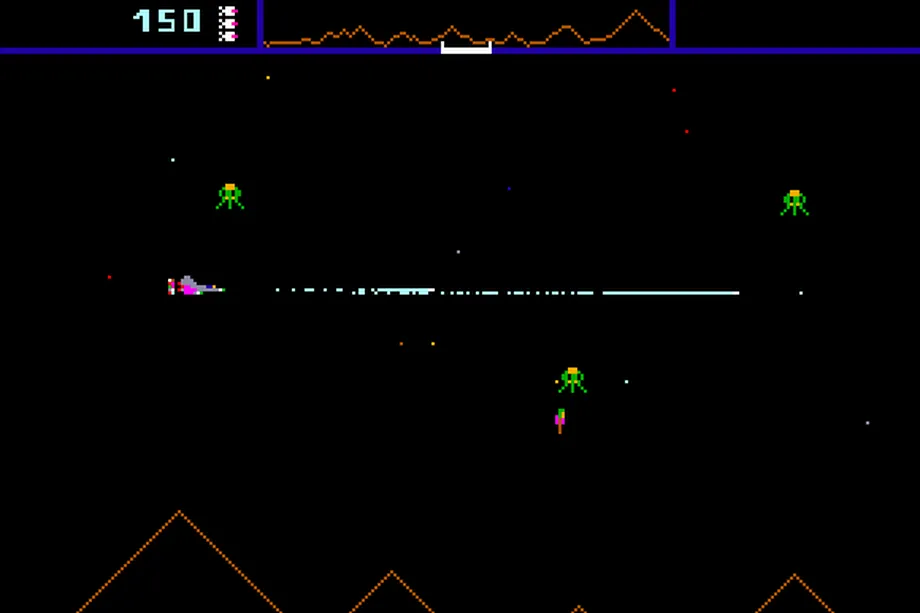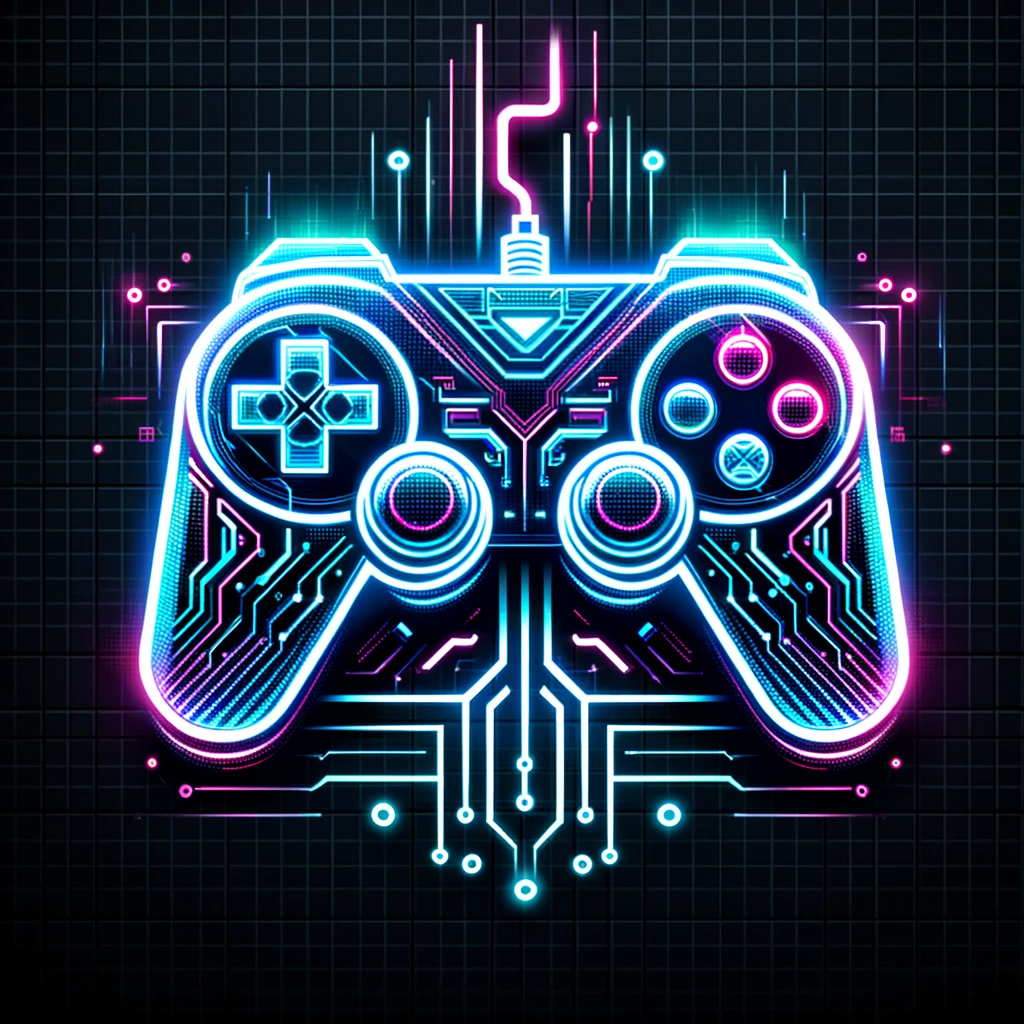
Defender
Arcade / Williams Electornics 1981
Defender is a classic arcade video game released by Williams Electronics in 1981. Designed by Eugene Jarvis and Larry DeMar, Defender is a side-scrolling shoot ’em up game that gained immense popularity for its innovative gameplay and challenging mechanics. Players control a spaceship tasked with defending humans from alien invaders on a fictional planet. With its fast-paced action, complex controls, and unique features such as scrolling backgrounds, Defender quickly became a landmark title in the arcade gaming industry.
The development of Defender was led by Eugene Jarvis and Larry DeMar, who aimed to create a game that stood out in the arcade market. Released during the “Golden Age of Arcade Games,” Defender was a pioneer in many aspects, introducing scrolling and multidirectional shooting to the arcade scene. Its challenging gameplay and high difficulty level set it apart from other titles of its time.
Upon its release, Defender received widespread acclaim for its groundbreaking gameplay and technical achievements. Critics praised its graphics, sound, and innovative features, making it a commercial success. Despite its initial complexity, Defender attracted a dedicated fan base and went on to become one of the highest-grossing arcade games of its era.
Defender spawned several sequels and spin-offs, including Stargate (also known as Defender II), which added new features and gameplay elements. The success of Defender inspired other developers to create similar side-scrolling shooters, influencing the entire genre.
Due to its popularity, Defender is not considered rare, but specific variants or well-preserved original cabinets may hold value among collectors. The exact number of Defender cabinets produced is challenging to determine, but the game’s widespread success suggests a substantial quantity. The value of a Defender arcade machine varies depending on factors like condition, rarity, and region, with well-maintained units potentially fetching higher prices in the collector’s market.
Defender runs on a Williams Electronics hardware platform. The hardware specifications include a Motorola 6809 microprocessor, running at 1 MHz, and discrete audio components for sound generation. The game’s control panel features a unique array of buttons and joysticks for the player to navigate the complex gameplay. Common repairs may involve replacing components such as buttons, joysticks, or addressing issues with the display and sound systems. A list of relevant parts for repairs includes the control panel components, power supply, monitor, and audio components. Arcade enthusiasts often seek replacement parts from specialized suppliers to maintain and restore original Defender cabinets.


